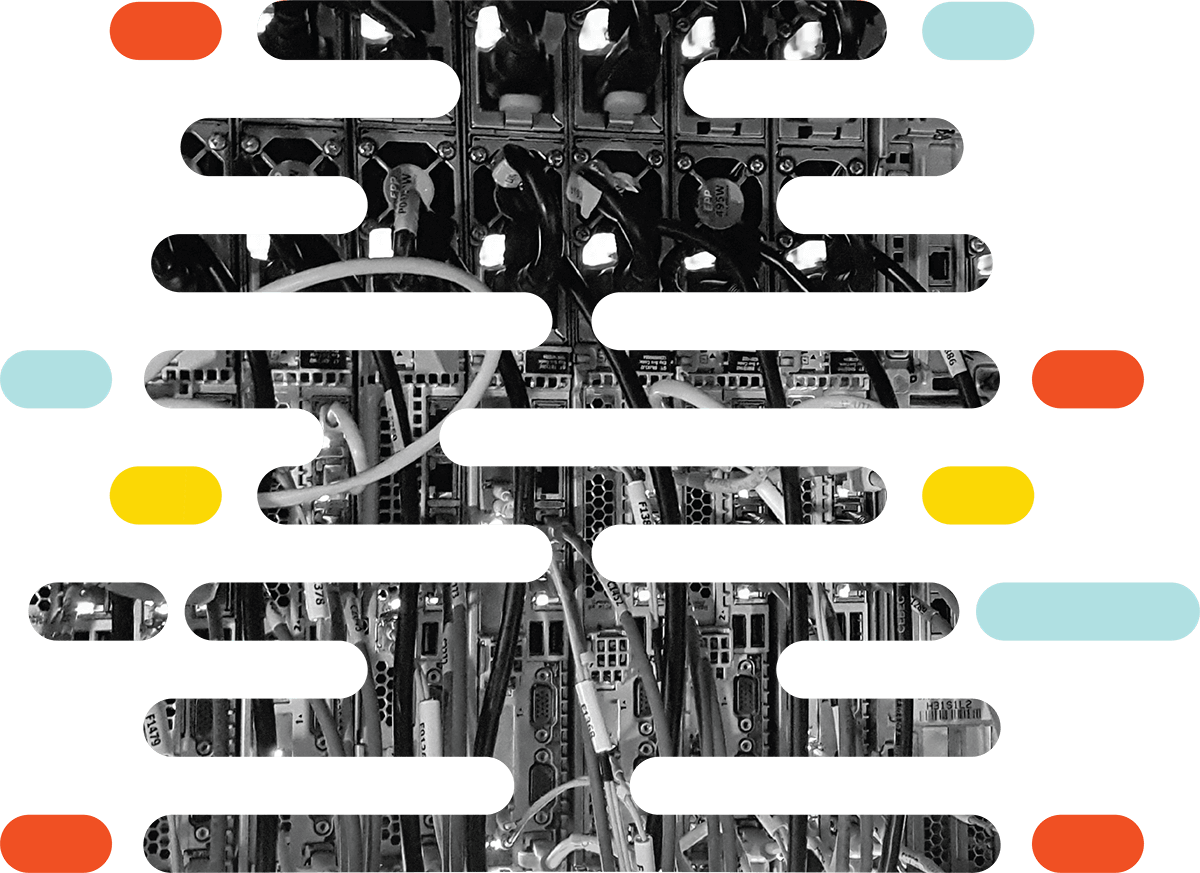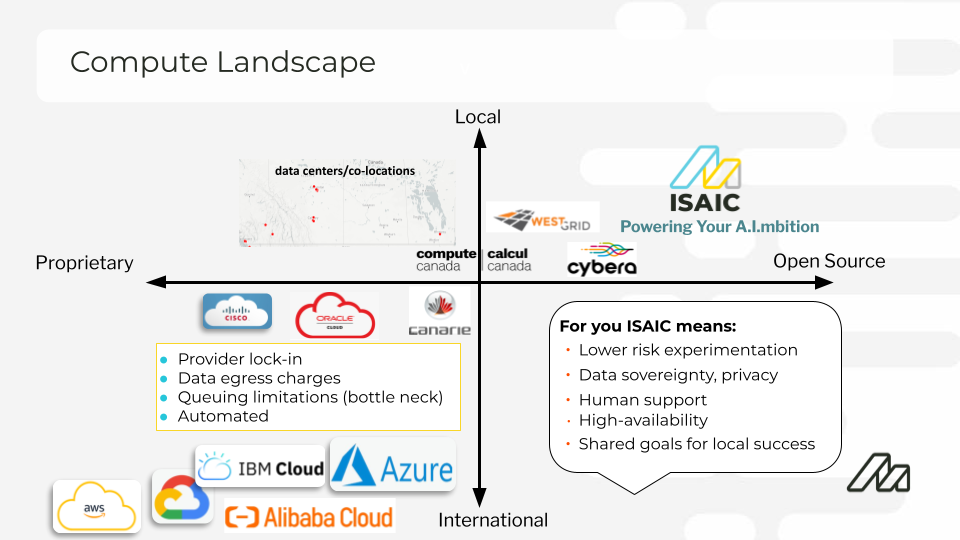
FAQS
You have questions, we have answers. Take a look through our frequently asked questions to learn a little more about ISAIC.
AI Garage FAQs Data Sandbox FAQsAI GARAGE FAQS
Here are answers to the most commonly asked questions about ISAIC’s AI Garage and its offerings.
Who does ISAIC’s AI Garage service?
ISAIC provides service to startups, small and medium-sized enterprises (SMEs) instructors and researchers collaborating with industry. Our focus is AI adoption and commercialization, which means projects with an applied focus and intended business impact versus theoretically oriented. Our mandate and priority are to serve Western Canadian businesses; we will assess clients in other geographies on a case-by-case basis.
How do I access ISAIC AI Garage tools and resources?
Resources are recommended and provided after you Book a Discovery and our team assesses your needs to determine how we can best support you. A discovery session is a personal call or online registration to share company goals and technical needs. From there, our team will set you up with a virtual environment customized to your needs and onboard you onto the platform.
Is there an application process to access ISAIC’s AI Garage resources?
No, there is no application process. If you’re a Western Canadian business just sign up for a Discovery to get the conversation on your requirements started.
How does ISAIC differ from commercial cloud providers, such as Google, Azure or, Amazon Web Services?
ISAIC is a local resource with a customizable environment that focuses on the success and A.I.mbition of Western Canadian businesses. Linked with the University of Alberta, our most powerful differentiator is that we are local, and offer unique advantages to collaboration opportunities within our community and network. At ISAIC any IP developed through our cloud virtual machines is fully owned by your business. There are no lock-in and no data ingress or egress fees. Your data can freely enter or exit our cloud VMs without incurring any fees or charges. Scaling up or back on a project is not complicated. We manage and maintain our infrastructure and your environment on it, so you can focus solely on your AI projects.

How do ISAIC’s offerings differ from Compute Canada?
ISAIC focuses on serving small and medium-sized businesses in Western Canada, as well as, instructors, institutions and corporations that strive to enable digital technology, artificial intelligence and a future enabled workforce and businesses. Compute Canada and WestGrid serve researchers. Researchers are recommended to work with WestGrid and Compute Canada, especially if they have current access to their scheduled resources. Businesses do not have access to these same resources and when industry-academic collaborations transition from research-focus to commercial-focus, ISAIC can offer the right support and resources.
How does ISAIC determine its pricing?
ISAIC’s pricing is based on benchmarks of commercial cloud providers, public-private serving entities, and accelerators, using those benchmarks we provide the most competitive rates possible for your project.
We support local companies through a sliding scale [time-based approach], and use public based funding available to supplement early start-ups and new AI adopters with the intent of building an AI-enabled ecosystem. See our pricing page.
How secure are ISAIC’s servers?
ISAIC’s servers are located within the Faculty of Engineering at the University of Alberta. Our data is secured using encrypted access. Access is restricted to individuals or accounts authorized by the user. This means only the client can access, in any way, the data uploaded or created in the VM.
Does ISAIC provide education on working with cloud-based GPU environments?
Yes, ISAIC provides introductory sessions, presentations and recommended tutorials or classes, as required, for our instructor subscribers and business clients. Our focus is to provide personal coaching and collaboration to fit each client’s unique needs.
What if my virtual environment develops an issue?
ISAIC manages and maintains our infrastructure and your environment on it, so you can focus solely on your AI projects. Should you have any questions or concerns our top tier technical & business support is available to guide you through any challenge at any point in time.
DATA SANDBOX FAQS
Here are answers to the most commonly asked questions about ISAIC’s Data Sandbox
What is a sandbox?
A sandbox is a risk-free, safe and isolated testing environment that enables users to share data with collaborators to build models, conduct experiments, execute files, or run programs without affecting the application, system, or platform on which they run.
Who can access the sandbox?
Your sandbox can only be accessed by yourself and your authorized collaborators with an encrypted access key. Collaborate with industry partners, cross-sector partners, researchers, students or your customers.
Where should I store my data?
ISAIC recommends that users store their data in volumes and not on the GPU instance itself. The instances are short in nature, so any data left in an instance when it is destroyed is deleted as well. However, data stored on volumes persist beyond the lifetime of the instance. As such, we recommend that volumes are used for more permanent data storage and only the operating system and application data should be stored on the ephemeral (VM) disk.
Should I back-up my data?
Yes. It is always important to ensure appropriate backups of all data are made. There may be considerations about which backup method you should use depending on the number of workstations and servers you run. For recommendations on backing up your data contact our team.
Does ISAIC work with my data directly or help me work with my data?
ISAIC can direct you to training and capability building programs, application resources, an online course or tutorial, and data talent such as an intern or grad student, peer mentor, etc., as well as helping with direct guidance and ecosystem support. We do not work directly with clients’ data.

